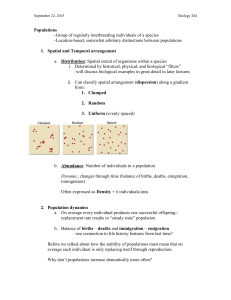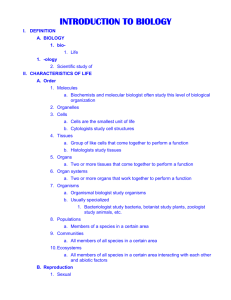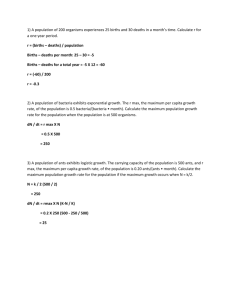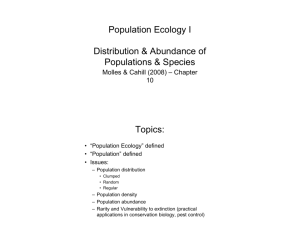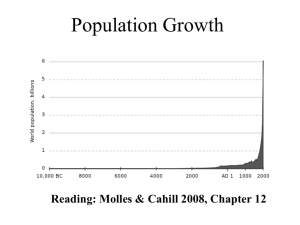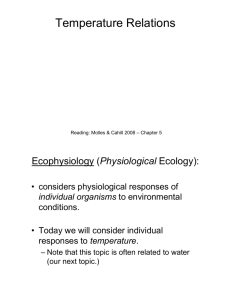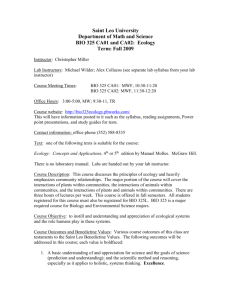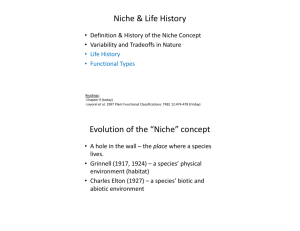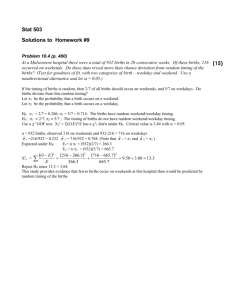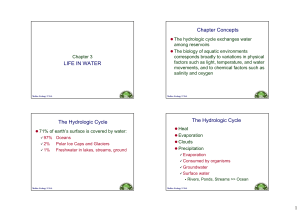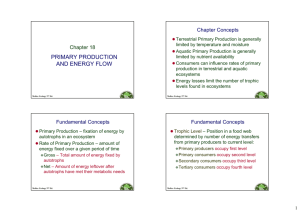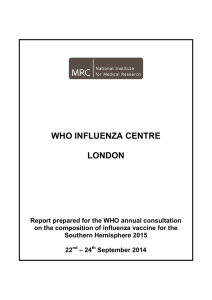Lecture notes for 5 Oct 2006
advertisement
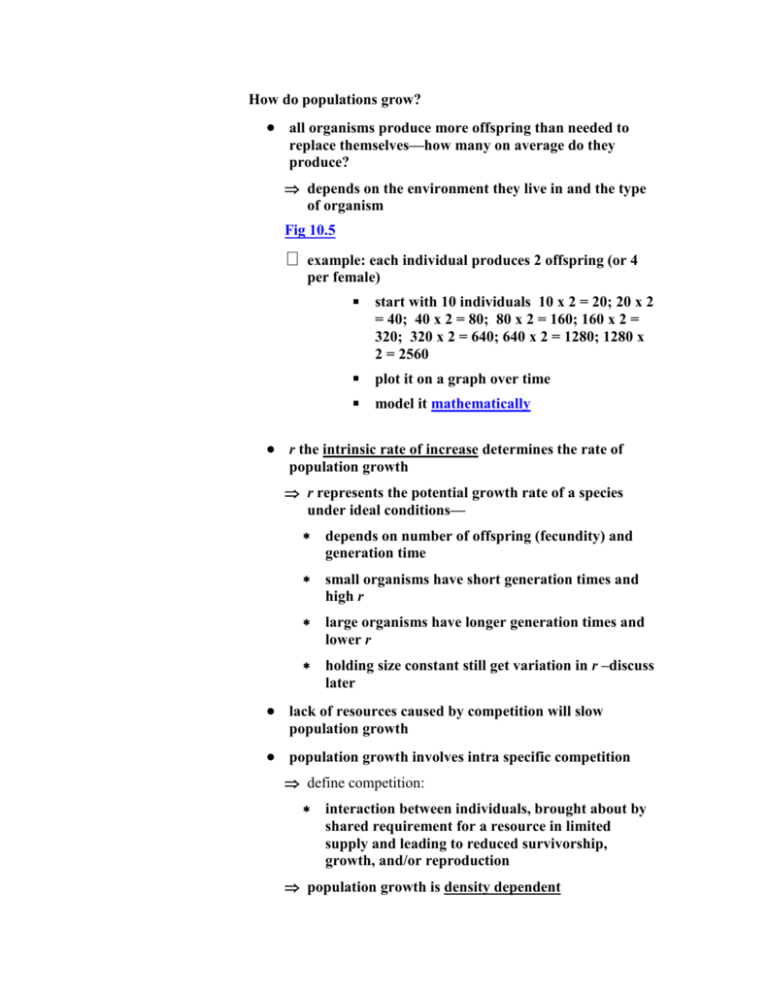
How do populations grow? all organisms produce more offspring than needed to replace themselves—how many on average do they produce? depends on the environment they live in and the type of organism Fig 10.5 example: each individual produces 2 offspring (or 4 per female) start with 10 individuals 10 x 2 = 20; 20 x 2 = 40; 40 x 2 = 80; 80 x 2 = 160; 160 x 2 = 320; 320 x 2 = 640; 640 x 2 = 1280; 1280 x 2 = 2560 plot it on a graph over time model it mathematically r the intrinsic rate of increase determines the rate of population growth r represents the potential growth rate of a species under ideal conditions— depends on number of offspring (fecundity) and generation time small organisms have short generation times and high r large organisms have longer generation times and lower r holding size constant still get variation in r –discuss later lack of resources caused by competition will slow population growth population growth involves intra specific competition define competition: interaction between individuals, brought about by shared requirement for a resource in limited supply and leading to reduced survivorship, growth, and/or reproduction population growth is density dependent competition can be intraspecific or interspecific mortality and fecundity are Density-dependent fecundity--eggs or offspring produced--says nothing about their survival-fitness data to support this statement planthoppers (fig 13.6 Molles); Isopods (fig 13.7 Molles) intraspecific competition regulates population size because mortality and birth rate depend on density-they can control population size where births = deaths you get stable numbers where births greater than deaths, numbers increase where deaths greater than births, numbers decrease stable point is called the carrying capacity If you follow increases in numbers over time from a starting point of very low density you get an S-shaped curve or sigmoid curve Fig 11.8, 11.9, 11.10, 11.11, 11.12 Molles the situations this occurs in experiments where a few individuals put into a cage with abundant resources recovery of animals after population crashes due to disease or predation there is no set carrying capacity for a population--it varies from year to year depending on resource supply, conditions competition impacts growth competition impacts numbers in a population, AND the size of individuals (ie. Fig 13.3, 13.4, 13.5 Molles) the final biomass of a population is often very similar-even when starting from different densities--ie. plant example law of constant final yield density x mean weight = constant 10 plants x 10 gm each= 100 gm 5 plants x 20 gm each= 100 gm competition's impacts on growth are asymmetric the rich get richer; the poor get poorer individual plant size becomes skewed to left as density increases the few, large individuals may be little affected by the smaller ones--but the reverse is not true-asymmetric competition territoriality is asymmetric competition among animals size differences may be present, but not as extreme as in plants--outcome is the same: few winners and many that don't reproduce at all
